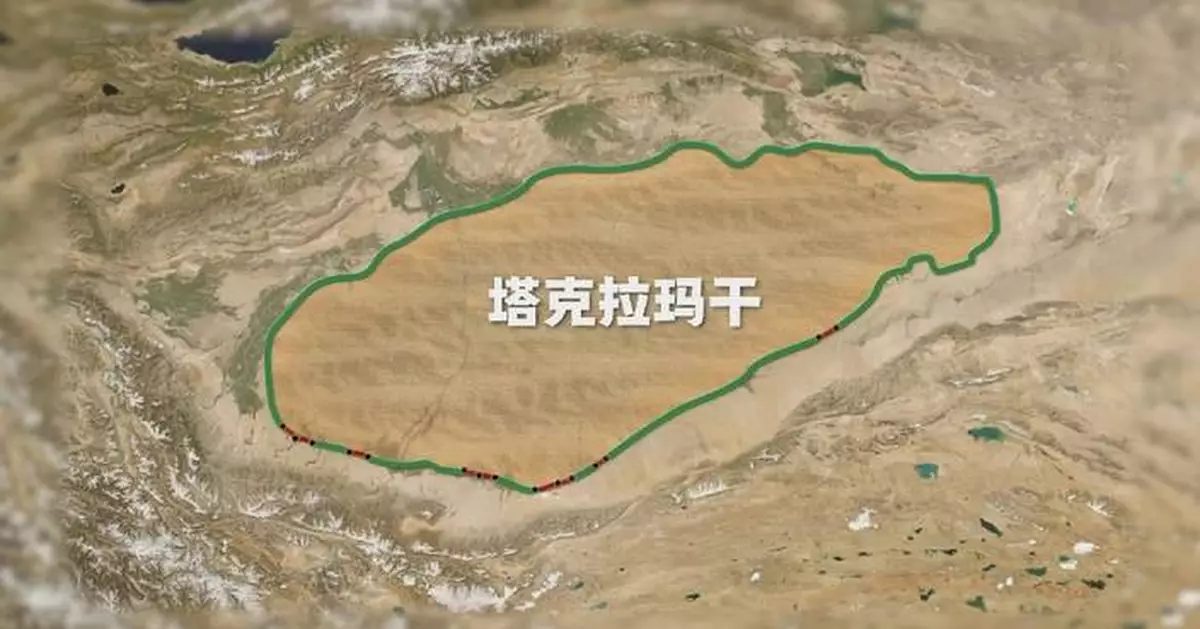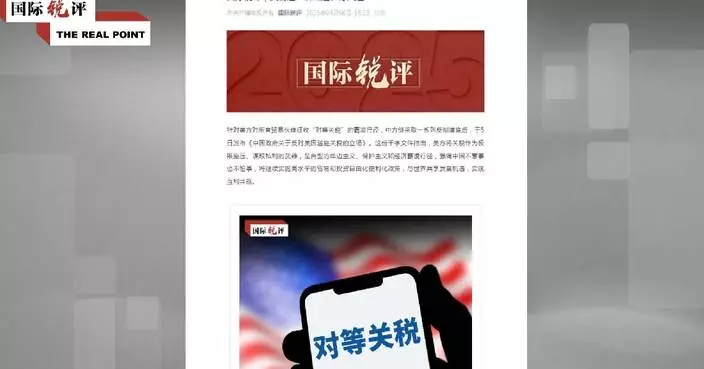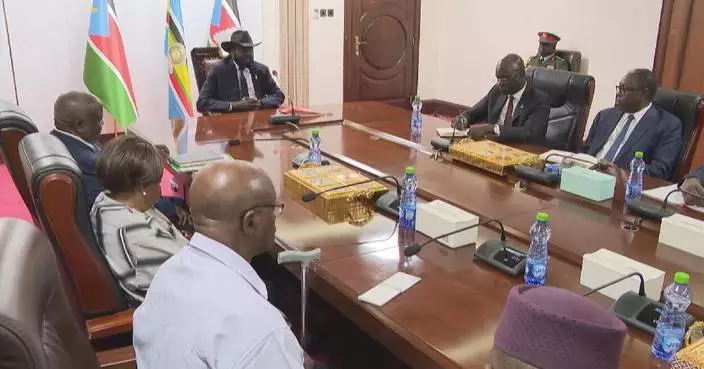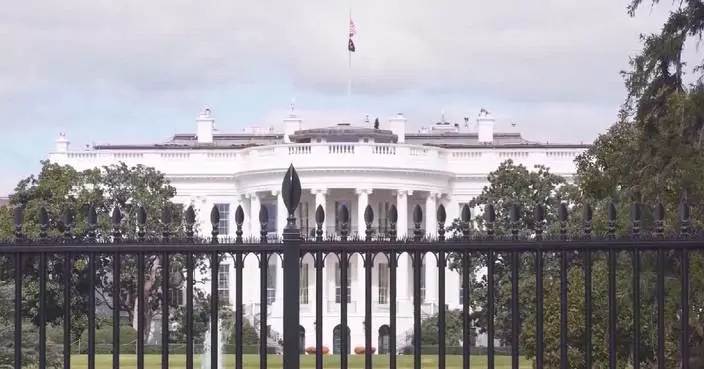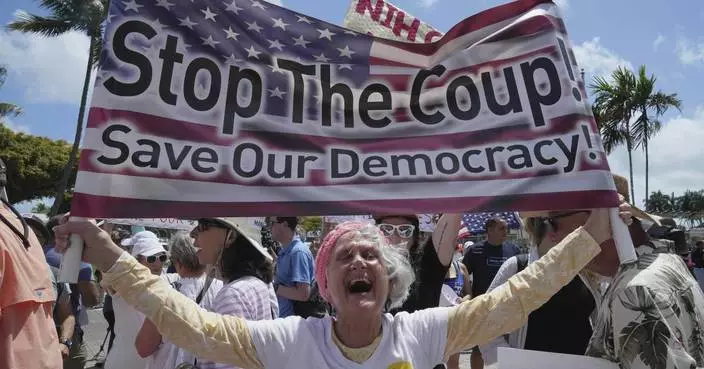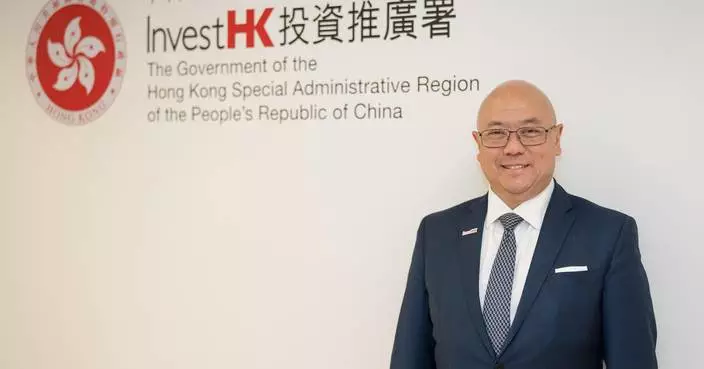The Taklimakan Desert, known as the "Sea of Death," has been completely encircled with a sand-blocking green belt stretching 3,046 km, said local authorities in northwest China's Xinjiang Uygur Autonomous Region.
On Thursday morning, several tree species, including Populus euphratica (more commonly known as "desert poplar"), sacsaoul and red willow, were planted on sandy land in Yutian County on the southern edge of the desert, marking the completion of the final stretch of the green belt, according to the Xinjiang regional forestry and grassland bureau.
The Taklimakan covers 337,600 square kilometers and its circumference measures 3,046 km, making it the largest desert in China and the second-largest drifting desert in the world.
It has taken more than 40 years to fully enclose the desert with a green belt. By the end of 2023, a nearly completed belt connected scattered oases, leaving only the final, most challenging section.
This final stretch, approximately 285 kilometers long, runs through the southern part of the desert and faces the most severe wind and sand hazards. Since this year, Xinjiang has taken targeted and scientific measures to close this gap.
"This section in our county accounts for 77 percent of the 285 kilometers of the unprotected desert area and the task is extremely challenging. By mobilizing the people and combining engineering and biological methods for desert control, we have successfully completed the encirclement today," said Deng Xiaobo, Party secretary of Hotan Prefecture Forestry and Grassland Bureau of Xinjiang.
Alongside the green belt, efforts have been made to promote the development of sand-terrain industries, such as the growing of cistanche, a desert plant used in Chinese herbal medicine, and other crops, to benefit local residents.
"Next, we will continue to expand the width of the protective barrier, focusing on creating a haul of landmark projects for sand prevention and control and firmly lock the Taklimakan Desert in place to prevent the spread of sand sources," said Wang Gang, deputy director of the desertification control division under Xinjiang Regional Forestry and Grassland Bureau.
The Taklimakan Desert control project is a part of China's Three-North Shelterbelt Forest Program (TSFP), the world's largest afforestation program to tackle desertification.
The TSFP was launched in 1978 and is scheduled to be completed by 2050.
In June 2023, China proposed to turn the TSFP into a fully functional and unbreakable "green Great Wall" and ecological security barrier in northern China.
Since 1978, China has expanded its afforestation area by 32 million hectares under the TSFP. The afforestation area under the program is projected to encompass over 4 million square kilometers across 13 provincial-level regions by 2050, accounting for 42.4 percent of the country's total land area.
Over the past 46 years, the forest coverage rate of the TSFP-covering areas has risen from 5.05 percent to 13.84 percent. Progress has been made in desertification and soil erosion control, while about 30 million hectares of farmland have been protected.
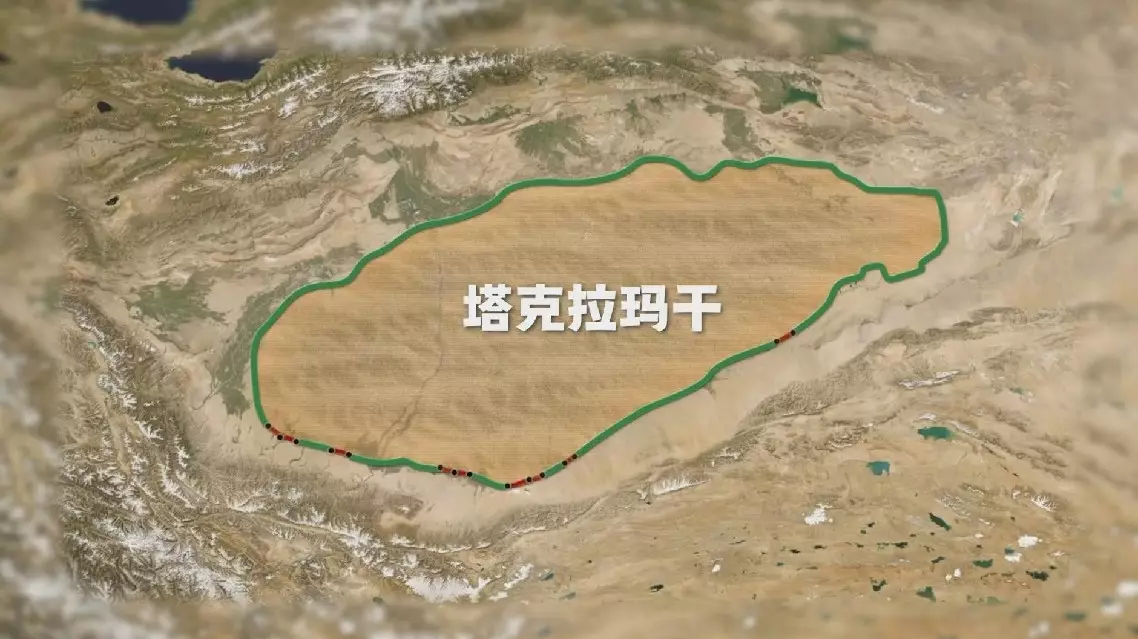
China's largest desert fully encircled with green belt
A 25 percent import tariff on all foreign-built vehicles entering the United States has raised serious concerns for manufacturers in South Africa.
Automotive giants like Mercedes and BMW have long used South Africa as a base for global exports -- but those plans may be shifting into reverse gear after the U.S. announced the punitive measures.
"If you take, for example, BMW, 97 percent of the X3 that we are producing in Rosslyn is exported out of the country. We only sell 3 percent in South Africa, and there's a huge number of those vehicles that also go into the U.S. So there are companies in South Africa that are purely here not because they are selling vehicles in South Africa; they are here to produce vehicles for the global market, and it's important for them to remain globally competitive," said Mike Mabasa, CEO of the National Association of Automobile Manufacturers of South Africa.
U.S. automaker Ford, which has deep roots in South Africa, is also in the crosshairs.
The company recently invested over 300 million U.S. dollars to upgrade its Silverton plant in Pretoria, South Africa, for the production of the world's only plug-in hybrid Ranger, which has just entered production but could face delays or restrictions.
"If an American citizen wants to buy specifically a Ford Ranger that is a plug-in hybrid, they can only place an order in South Africa, nowhere else in the world. So, that means, obviously, the capacity of Ford to be able to produce those vehicles in big volumes is going to be constrained, because Americans are going be looking at another Ford that is produced in another country, or even in the United States," said Mabasa.
South Africa has long enjoyed duty-free automotive exports to the U.S. under the African Growth and Opportunity Act, but that relationship now hangs in the balance.
A sharp shift in U.S. foreign policy threatens to derail an industry that employs thousands and contributes around 5 percent to the country's economy.
"We produce less than 1 percent of global automotive vehicles, so to say. So, in reality, the impact on us is likely to be more disproportionate than those of our peers that produce at the same level. And the risk is actually created -- a concentration risk -- in countries that have greater capacity and are building more; in those countries will be able to absorb some of this," said Parks Tau, South Africa's minister of trade and industry.
Amid growing concerns about overreliance on the U.S. market, Amith Singh, national manager for manufacturing at Nedbank Commercial Bank, emphasized the importance of tapping into regional trade opportunities.
"I think we need to make better use of some of our local agreements, our African continental agreements. How do we leverage that? How do we partner with the government and private sector to start benefiting the countries and the economies aside from the United States? So, those could be the catalyst to drive our localization projects; it could be what we need to drive the African economy as opposed to being completely reliant on the States (United States)," he said.
South Africa is for now standing firm in its decision not to retaliate against steep U.S. import tariffs, set to take effect in just a few days.
Officials in Pretoria acknowledge the challenges posed by the current U.S. administration but are pursuing a diplomatic approach in hopes of maintaining stable relations and preserving the African Growth and Opportunity Act.
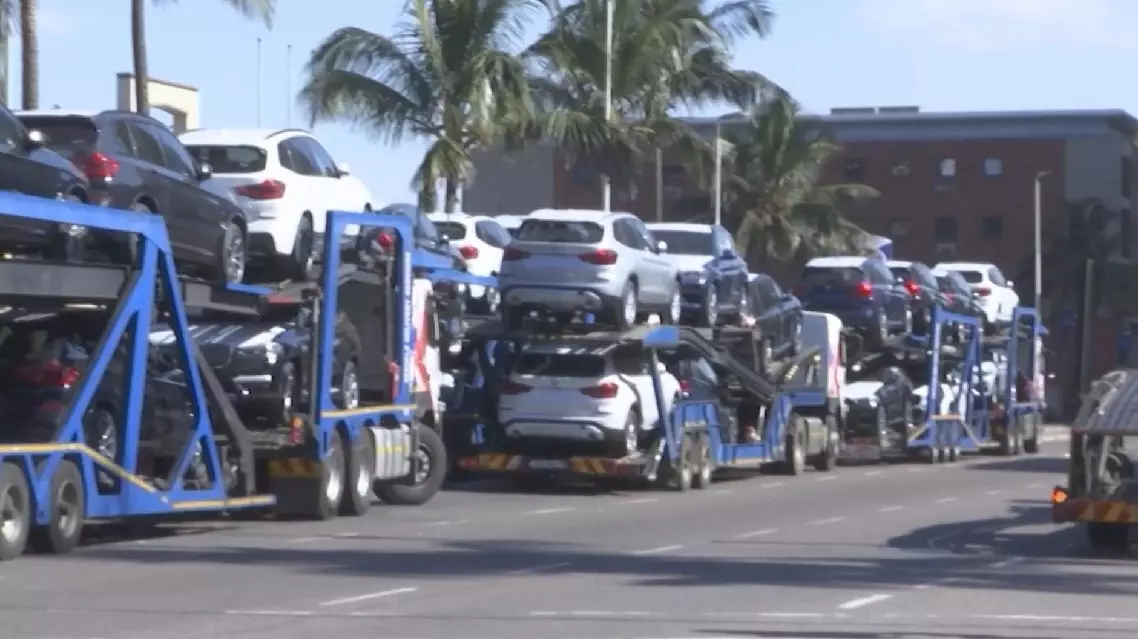
US tariffs rock South Africa’s auto industry



